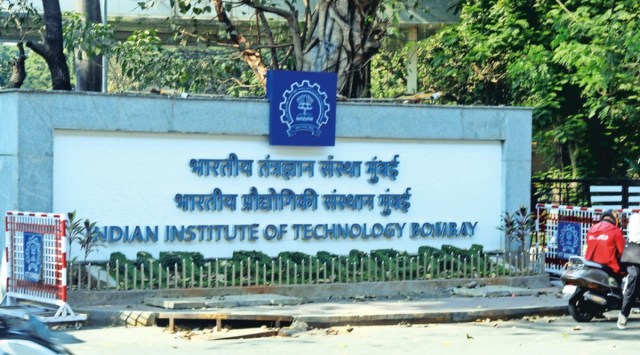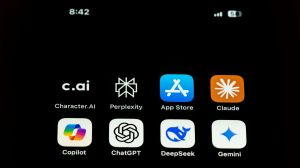On June 28, 2021, IIT Bombay had announced a “completely new and novel type of undergraduate programme,” focused on “student choice and interdisciplinary studies.” The Liberal Arts-Sciences-Engineering (LASE) programme, with 30 seats, would provide students the opportunity to customise their coursework according to their interests and graduate with a Bachelor of Sciences or BS degree. It was a “liberal arts style offering in STEM” — a first in India.
Two years later, it hasn’t started — it couldn’t get even the minimum requirement of 10 students of a class of over 1,000 to sign up.

Behind this disinterest is a “lack of acceptance” and wariness over securing a degree other than the tried and tested IIT B.Tech, say faculty and students.
Traditionally, IIT students, regardless of their engineering branch, take courses from different departments, including Humanities and Social Sciences, during their four years at the institute. However, the number of non-core courses is often limited by their core branch’s curriculum requirements.
In contrast, LASE promises students the flexibility to select courses from any department and design a multi-disciplinary degree without constraints.
As per the programme design, students admitted to LASE, in their second year at IIT Bombay, have to study five courses including modern South Asian history, history of science, inequality and society, analytical reading and writing, and digital lives.
The remaining courses can be from any department of the institute. At the end of four years, a LASE student graduates with a BS degree in one of the following: Natural Sciences; Engineering Sciences; Social Sciences; Art and Design. The institute promised to assign each student with a faculty advisor to help them choose and customise their coursework.
Story continues below this ad
In 2022, three students entering second year made the cut for LASE and just six in 2023. The shortfall this year was despite reducing entry barriers for the programme by removing the Statement of Purpose (SoP) and interview requirements.
Last year, when three students made the cut, applicants had to write an entrance test, submit an SoP, and take an interview. Only the CGPA of a student was used for admission this year, in what was an attempt to widen the pool of applicants, said Anush Kapadia, who teaches Political Economy at IIT Bombay and is a member of the 12-member core committee driving LASE.
Students who spoke to The Indian Express said many were apprehensive about receiving a BS degree instead of B.Tech after four years. While some acknowledged the benefits of aligning their curriculum with their goals, others were concerned about the degree and lack of placement statistics.
“One of the major hesitations was this is something new. People are generally very risk-averse. Another thing was that they were providing a BS degree, and in IIT students come for B.Tech,” said a third-year student, who applied for LASE in her second year in 2022.
Story continues below this ad
“We were aware the BS vs. B.Tech thing would happen, and we kind of anticipated it, but we were not sure of the magnitude with which it would come,” said Anurag Mehra, a professor at IIT Bombay’s Chemical Engineering department who spearheads LASE and is head of the 12-member committee.
“The brand equity of the B.Tech is too well-established,” he said. My one strong learning from this whole thing is that this whole BS thing is very deeply entrenched. And no amount of rationality can dispel it,” he added.
“We made an error of judgement here. Our assessment was that once you come here, worse to worse you can get an IIT degree. Our anticipation was that if you remove all the barriers, 30 seats will be filled. There we faltered,” Kapadia said.
Perhaps the pandemic is also to blame, suggested Mehra. “The recovery has been very slow. People are grappling with mental health issues, covering up things, and in some sense the opening years after Covid are much more difficult than the Covid years itself. I think we could have done more but people were just overawed with the reopening of the whole system,” he said.
Story continues below this ad
ExplainedBS vs BTech: Brand equity
Nudged by the Union government and the emphasis on interdisciplinarity laid out in the National Education Policy 2020, IIT Bombay launched a liberal arts-science undergraduate programme, a first by any IIT, in 2021. Two years later, the institute has realised the considerable distance to cover in terms of gaining acceptance for such flexibility.
Asked why the course couldn’t start with fewer than ten students, Mehra said: There’s a general norm of not starting any course with less than 5 students, because it becomes a waste of resources.”
The program will take another stab in the coming semester — a third trial. Speaking to The Indian Express,Deputy Director of IIT Bombay, Professor S Sudarshan said that the institute will continue offering LASE to its students. “Not enough students opted for it. It’s an opportunity and we’ll be happy to give that opportunity,” he said.
Sudarshan is banking on the word getting around and more students realising the potential. Like an applicant who made the cut but had to settle for her engineering branch since LASE didn’t take off. “What attracted me most was the freedom to do what I wanted to do, the chance to discover what I really wanted to do, and the assurance they provided in the sense that we’re there to guide you people, help you.”

































